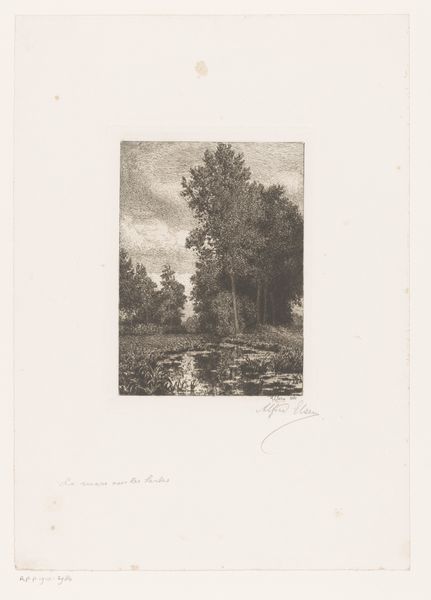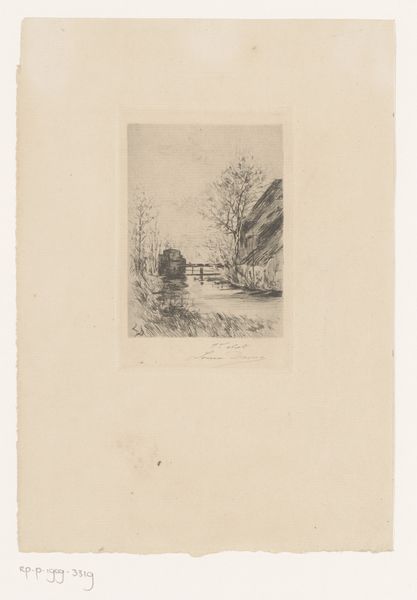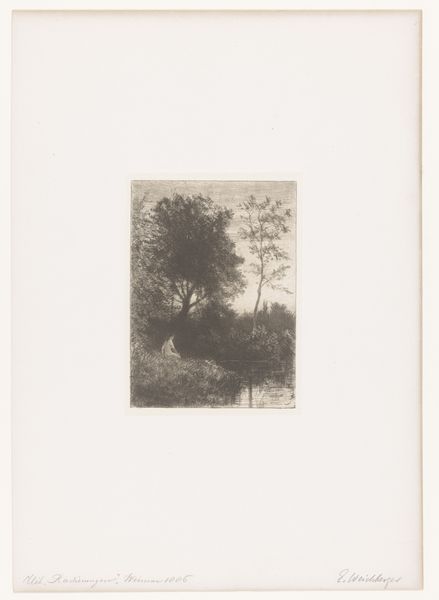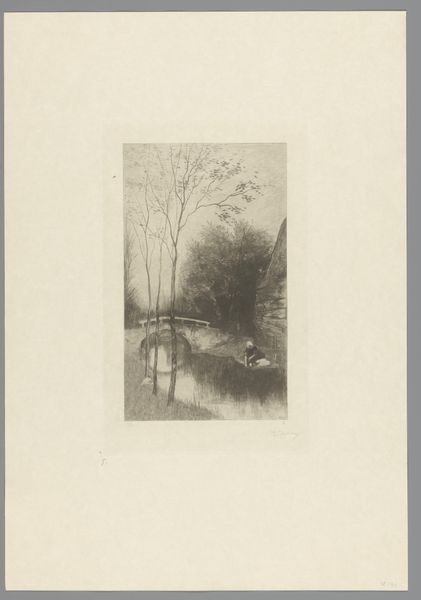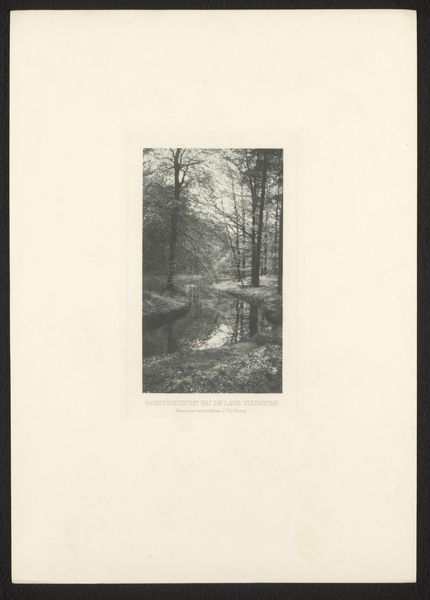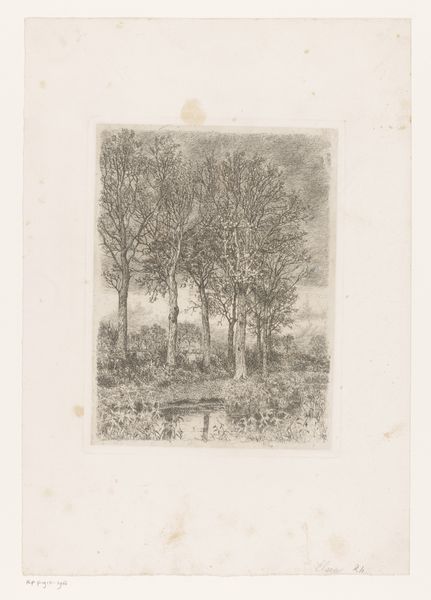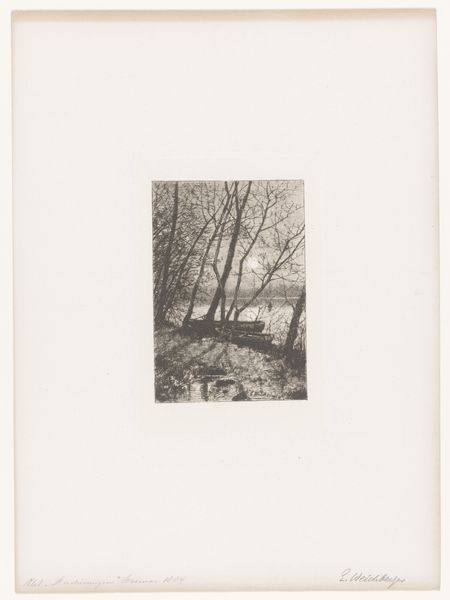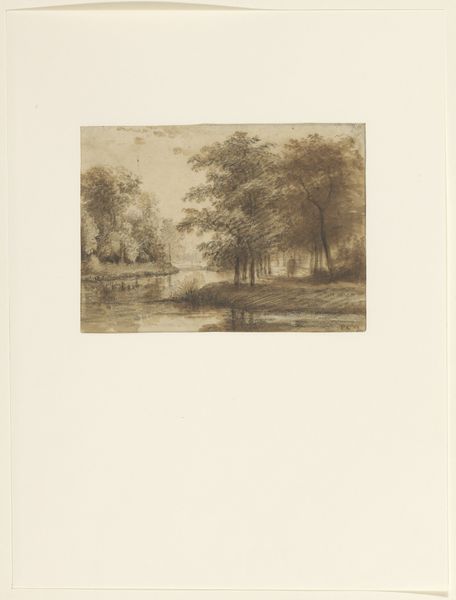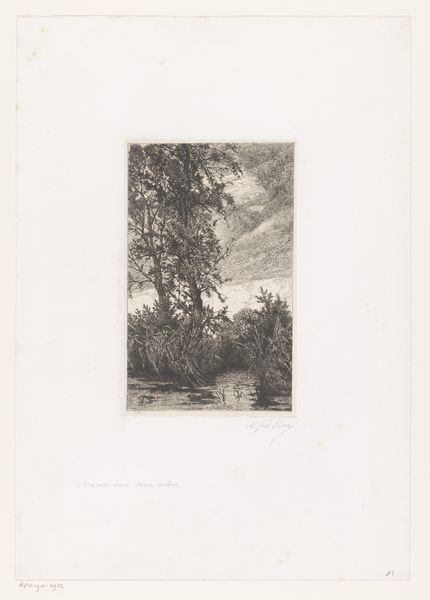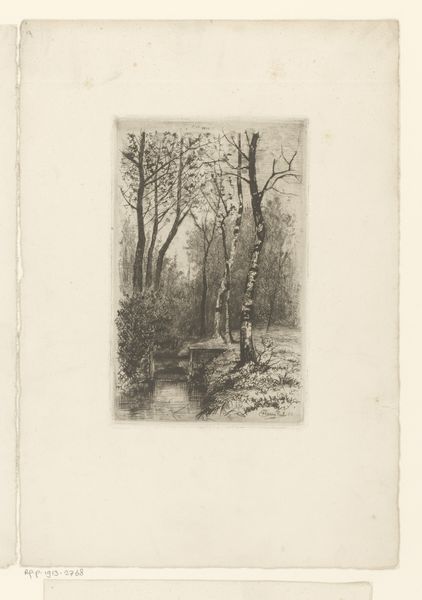
print, etching
#
tree
# print
#
etching
#
landscape
#
realism
Dimensions: height 230 mm, width 176 mm
Copyright: Rijks Museum: Open Domain
Curator: This etching, "Herfstochtend" or "Autumn Morning", by Philip Zilcken, probably dates from between 1867 and 1890 and is currently held at the Rijksmuseum. The technique captures a subdued, almost dreamlike atmosphere. Editor: My immediate impression is one of stillness and reflection, even melancholy. The scene is bathed in a soft light that almost seems to mute the sounds one might expect in a landscape like this. Curator: It's an interesting selection of medium and style here: Realism through the lens of printmaking. Printmaking as a discipline often served social and political purposes during this time period. The rise of illustrated newspapers and affordable prints put images in the hands of a wider public than ever before. Do you see that playing out in Zilcken’s composition? Editor: Definitely. The landscape, with its lone tree reflected in the water, invites the viewer into a symbolic space of introspection and solitude. Water is a potent signifier, here seemingly representing the unconscious. The composition almost feels designed to elicit those kinds of deeply personal readings. Curator: True. Landscapes became popular not just as pretty pictures, but as symbols of national identity, or critiques of industrialization and its impact on nature. Artists, then, were directly speaking to an increasingly aware public through imagery, encouraging social responsibility, even action. What about Zilcken? What social concerns do you see playing out? Editor: In this particular scene? The scale is so intimate and private, I wonder if it might even signal the artist’s resistance to such widespread engagement. Maybe there's an element of retreat here, an attempt to explore the universal, through nature, on a personal, spiritual level rather than at a political one. Curator: A tempting argument, definitely. Considering Zilcken's broader body of work and engagement within art societies and the accessibility he pursued, it feels reductive to claim outright withdrawal, even if there is a clear degree of introspective reflection happening. But it does hint to me that maybe our definitions of societal action might be too restrictive here. Editor: It seems like we’ve arrived at the crux of why this artwork remains compelling: the interplay between inner emotion and broader societal forces. The symbolic pull remains strong, inviting the viewer to enter a meditative state. Curator: Exactly. This single piece showcases how visual works provide both an entry into an era, and a method of examining one's relationship to the world, even now.
Comments
No comments
Be the first to comment and join the conversation on the ultimate creative platform.

